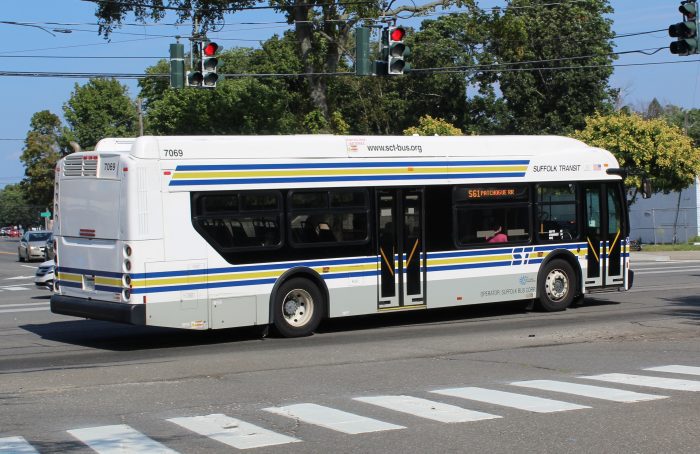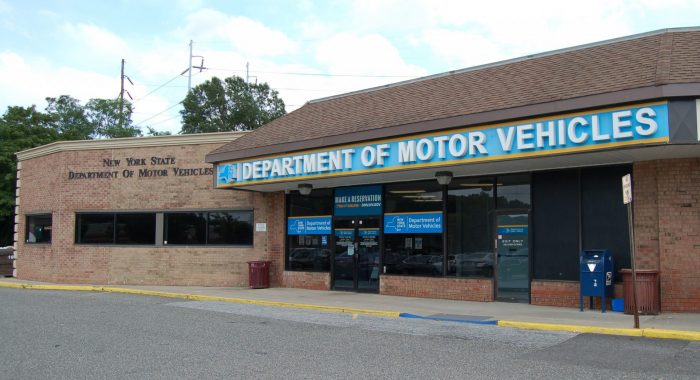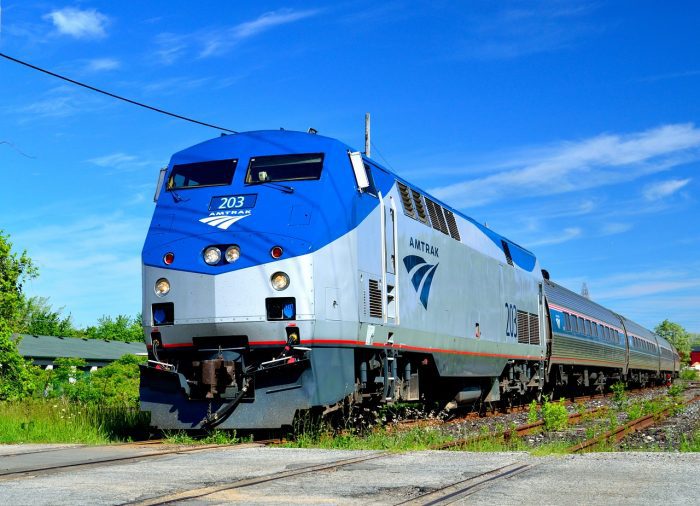News Flash
Generated by ChatGPT, edited by our staff
• MTA includes Port Jefferson Branch improvements in 20-year capital needs assessment.
• Inclusion doesn’t guarantee pursuit, decisions hinge on future funding and other factors.
• Local officials push for project, emphasizing economic benefits and improved transit.
The decades-old proposal to electrify the Port Jefferson Branch of the Long Island Rail Road passed a significant hurdle last week, though uncertainty remains long-term.
The Metropolitan Transportation Authority, which owns and operates LIRR, included capacity improvements for the Port Jeff Branch within its 2025-2044 20-Year Needs Assessment blueprint published last week.
The document outlines MTA’s long-term vision for the region’s transit, describing some of the needed improvements for the local line, including electrification, double tracking, stations, a storage yard and associated infrastructure.
The report states some of the project’s objectives, such as increased travel speed and frequency while providing a one-seat ride to Penn Station and Grand Central Madison. It further acknowledges the need to reduce strain upon the Ronkonkoma Branch by North Shore riders driving inland.
In a Sept. 29 letter addressed to Gov. Kathy Hochul (D), over two dozen state, county and local public officials called for Port Jeff Branch modernization within the 20-year plan. Dave Steckel, an MTA media liaison, said the agency had complied with the core request of the letter.
“Regarding the letter on Port Jefferson Branch electrification, the MTA has satisfied the request laid out in that letter by including Port Jefferson Branch electrification in the 20-year needs assessment,” Steckel said.
But, he added, “Inclusion in this analysis does not mean that the MTA will be pursuing a project. Decisions about which of these projects, if any, will be included in subsequent MTA capital programs, will be made in the context of those future programs, including the amount of funding available to rebuild and improve the existing MTA system, which will need to be prioritized before any expansion projects can be considered.”
The report finds potential operational constraints for the electrification project, highlighting the need for additional capital improvements, space for a new terminal rail yard and planning studies. The plan suggests the Lawrence Aviation Superfund site in Port Jefferson Station as a potential site for the rail yard.
The 20-year plan also added some possible drawbacks for prioritizing the Port Jeff Branch. Electrification of the line rated average in cost-effectiveness “mainly due to the high cost and relatively low ridership.”
Continuing the fight
In separate statements to TBR News Media, public officials representing North Shore communities continued to call for the MTA to prioritize the project.
New York State Sen. Anthony Palumbo (R-New Suffolk) emphasized the centrality of the Lawrence Aviation property in regional planning for the North Shore and beyond.
“Electrification of the Port Jefferson line and the establishment of the Lawrence Aviation site as a regional rail hub is a critically important component of our efforts to enhance mass transit service to North Shore residents,” he said. “Improving access and reliability to our mass transit system will increase ridership, alleviate traffic congestion and be an economic boost to the local economy.”
Village of Port Jefferson Mayor Lauren Sheprow expanded on the existing pressures upon Port Jeff Branch commuters to Manhattan, particularly in the context of the burden of transit by rail.
“For years, residents of Port Jeff and the surrounding communities have demonstrated by their actions how they feel about the Port Jefferson Branch — we drive to Ronkonkoma when seeking direct travel, a shorter commute, more frequent service options and less transfers,” she said. “Electrification and modernization of the Port Jefferson Branch will increase connectivity between stations. It will reduce travel time and transfers, and provide more frequent scheduling options, including express options.”
State Sen. Mario Mattera (R-St. James) emphasized the vast support for this effort among officials and community stakeholders, noting “everybody involved wants this.” He said generating the necessary public awareness and appealing to Hochul remain critical.
“We need to make sure that we convince the governor that this is important for Long Islanders,” he said, advocating for a grassroots, mobilized effort to bolster public support. “Strength with numbers wins,” he added.
Town of Brookhaven Supervisor Ed Romaine (R) suggested electrification would help counteract some of the downward trends throughout the region, namely the loss of youth.
“Thousands of Brookhaven residents use the LIRR to commute to work every day, and thousands more ride the train for other reasons,” the town supervisor said. “Electrification would provide faster, more efficient service and attract people to live in the communities with close access to the railroad,” adding, “The economic upside would be felt throughout the town as more people choose to live here, and our young people decide to stay because of the improved LIRR service and easier access in and out of New York City.”
Though placement onto the 20-year plan could be considered a win, much work remains ahead. Larry Penner, a transit advocate and former director of Federal Transit Administration Region 2, called upon the various governmental bodies across the North Shore to begin laying down seed funds to signal their interest.
“Why don’t all these elected officials put up some money to at least keep the project alive?” he said. “Why are they waiting for the MTA to move the project forward?” He added, “Talk is cheap, but actions speak louder.”

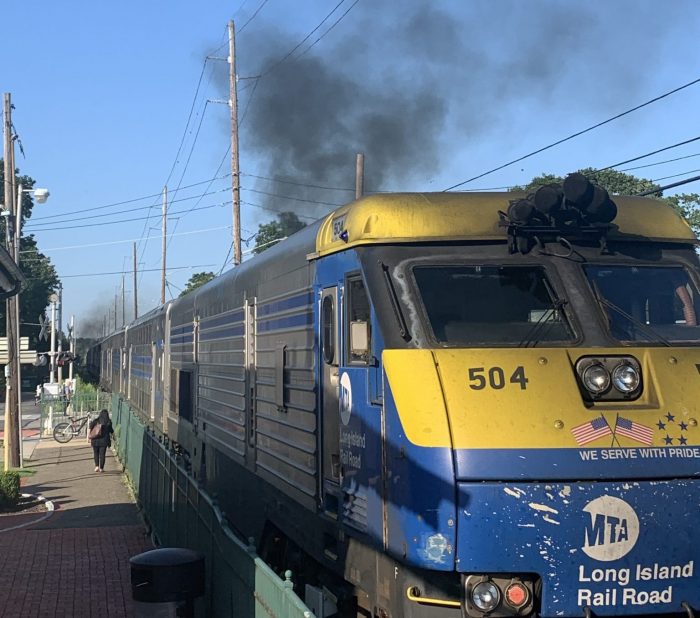

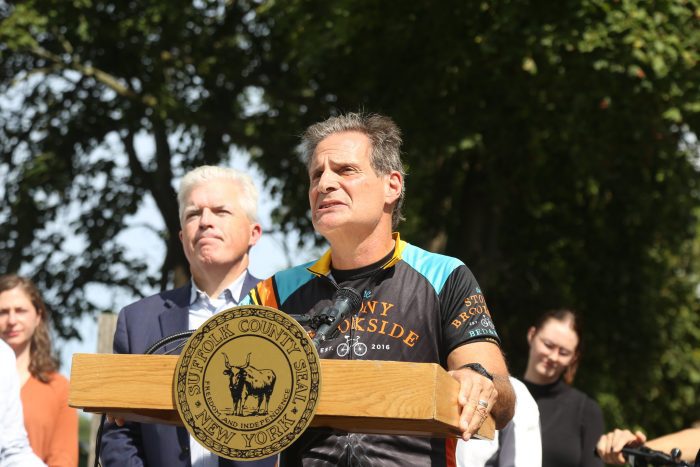
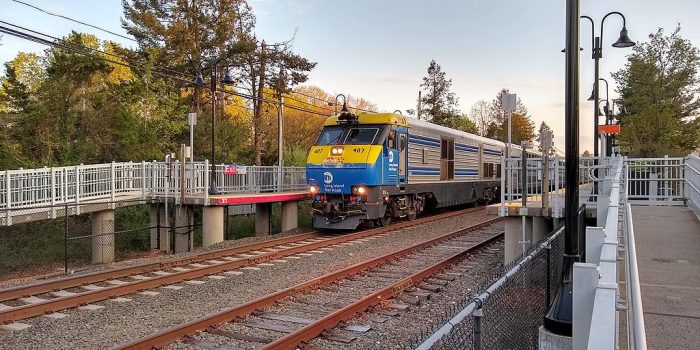
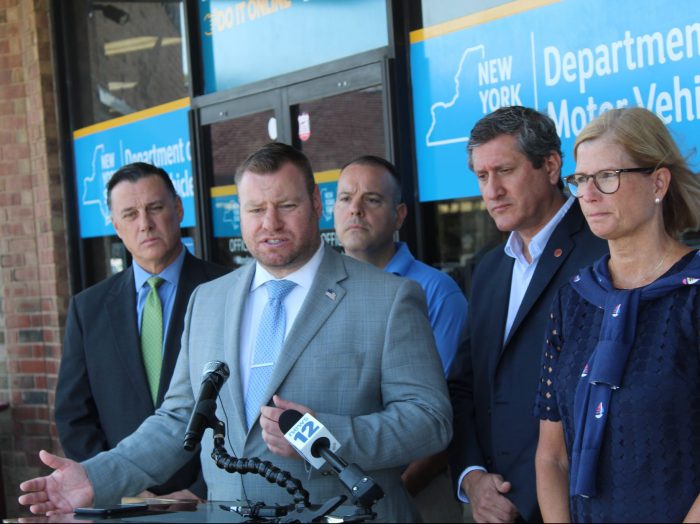
 She also suggested that the closure contradicts the spirit of Hochul’s environmental agenda.
She also suggested that the closure contradicts the spirit of Hochul’s environmental agenda.